Lensrentals has loaned me a Fuji GFX 100S II for testing. Today I’m reporting on engineering dynamic range (EDR).
In single shot mode at putative 14-bit precision:
Same as the GFX 100 II, including the odd results at ISO 80, which in that camera was the result of gratuitous in-camera black point processing.
In single shot mode at putative 16-bit precision:
Like with the GFX 100 II, 16 bit precision doesn’t appreciably improve the EDR.
Here are both of the above plots on the same graph:
In CH5 mode:
Same as 14 bit single shot mode. There is no 16-bit CH5 mode.
CH7 mode:
CH7 is noisier than CH5.
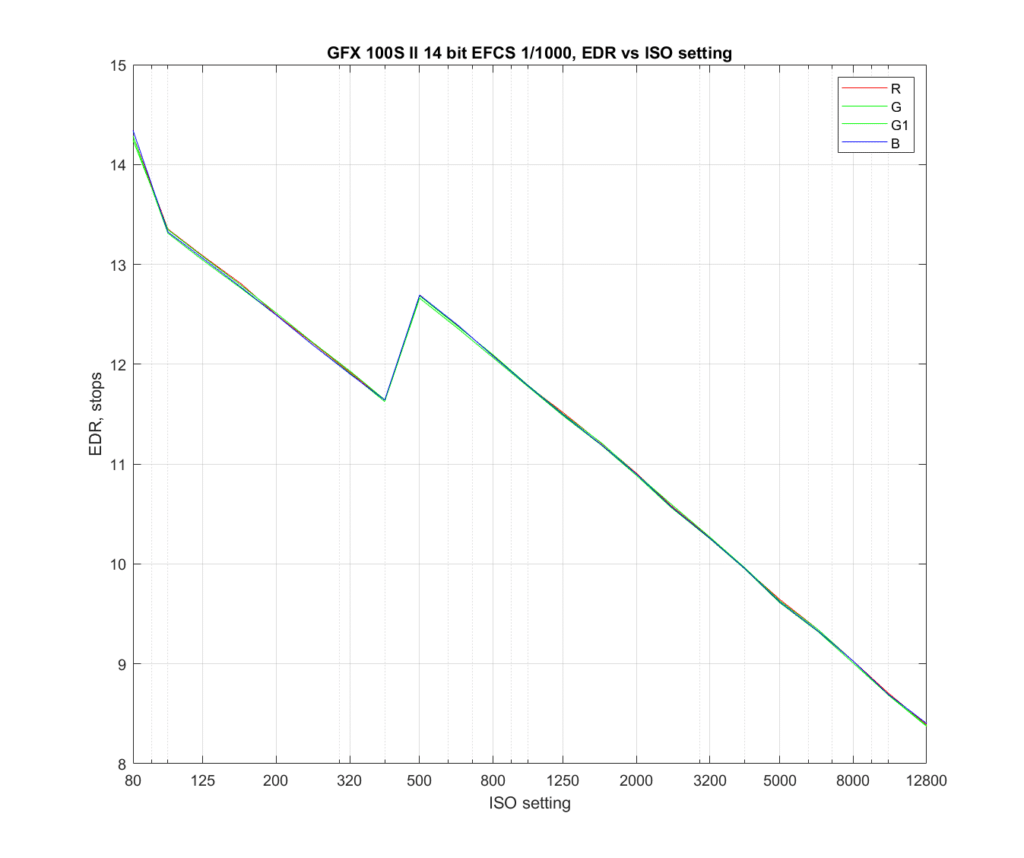
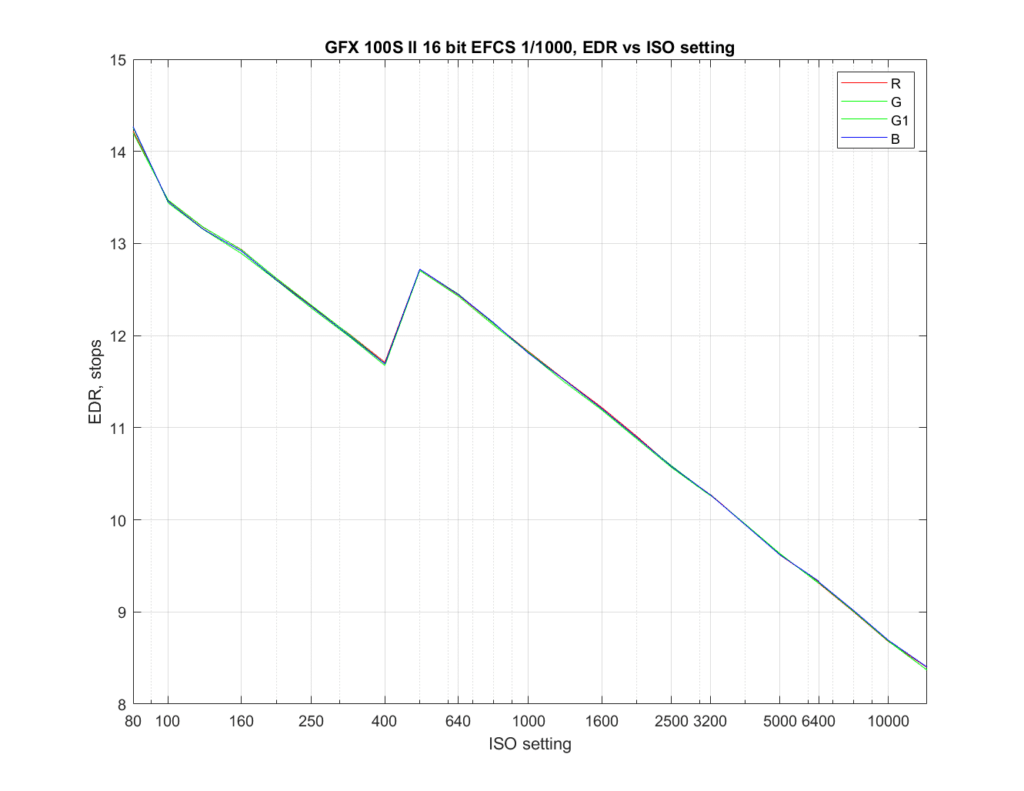
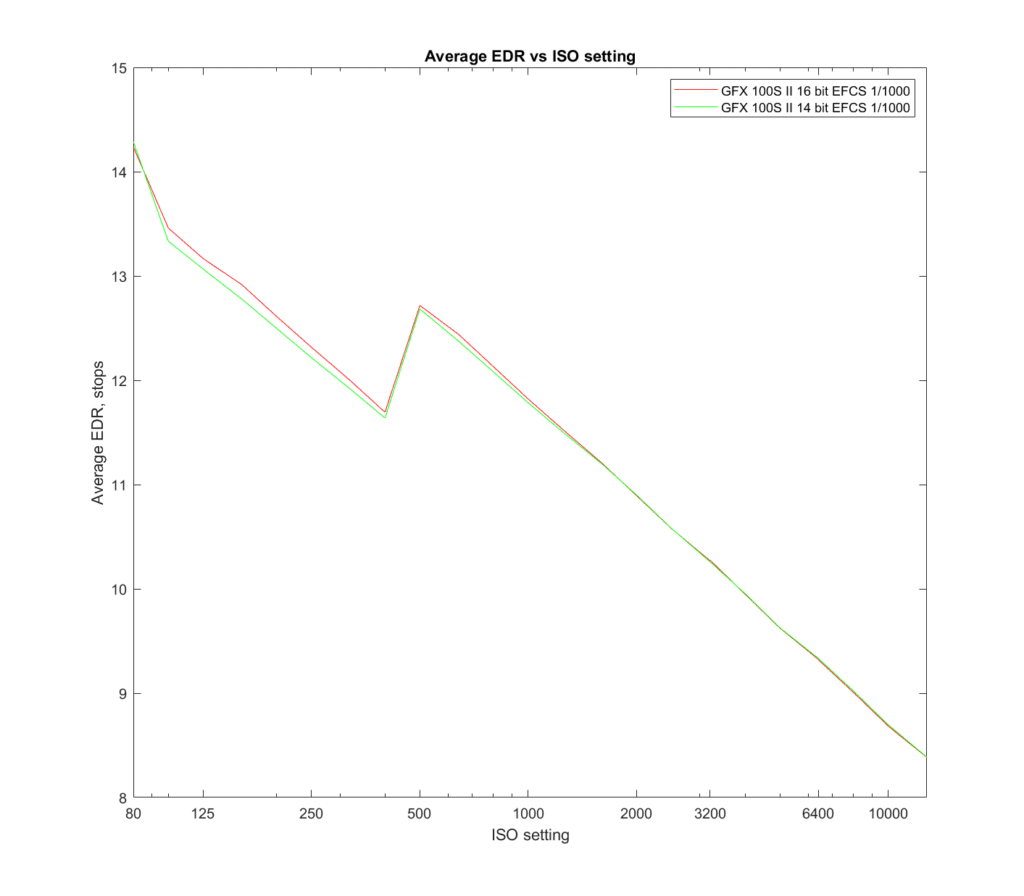
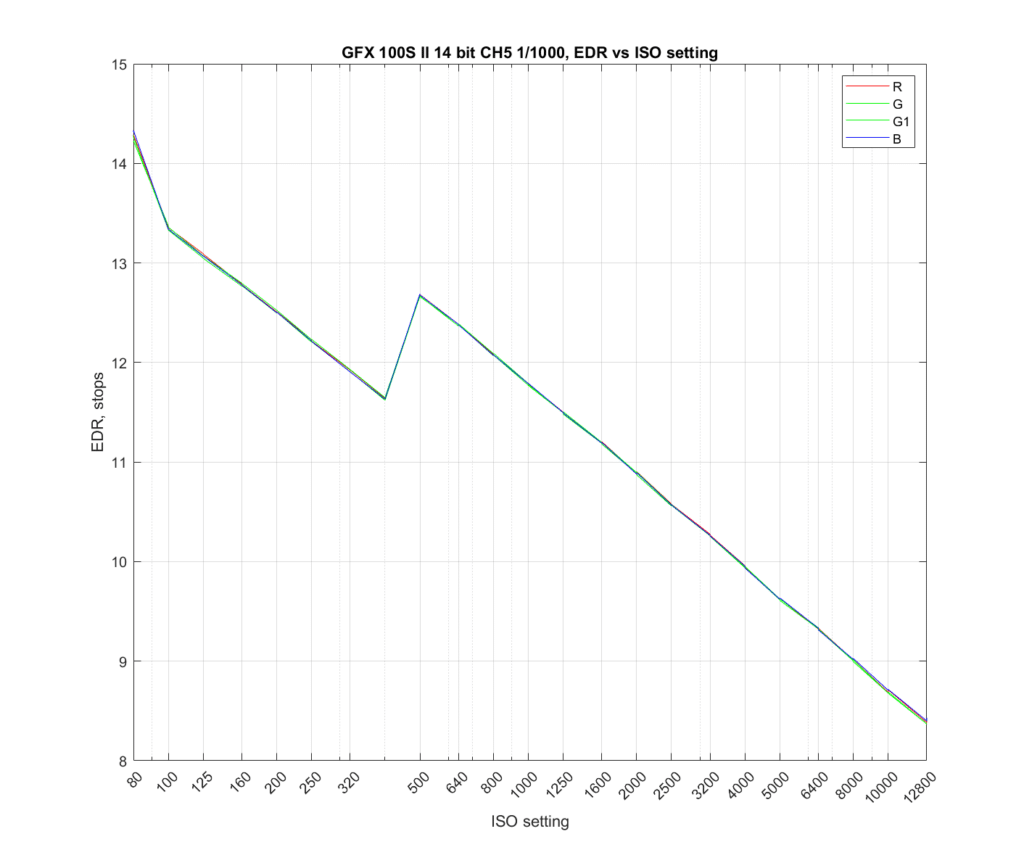
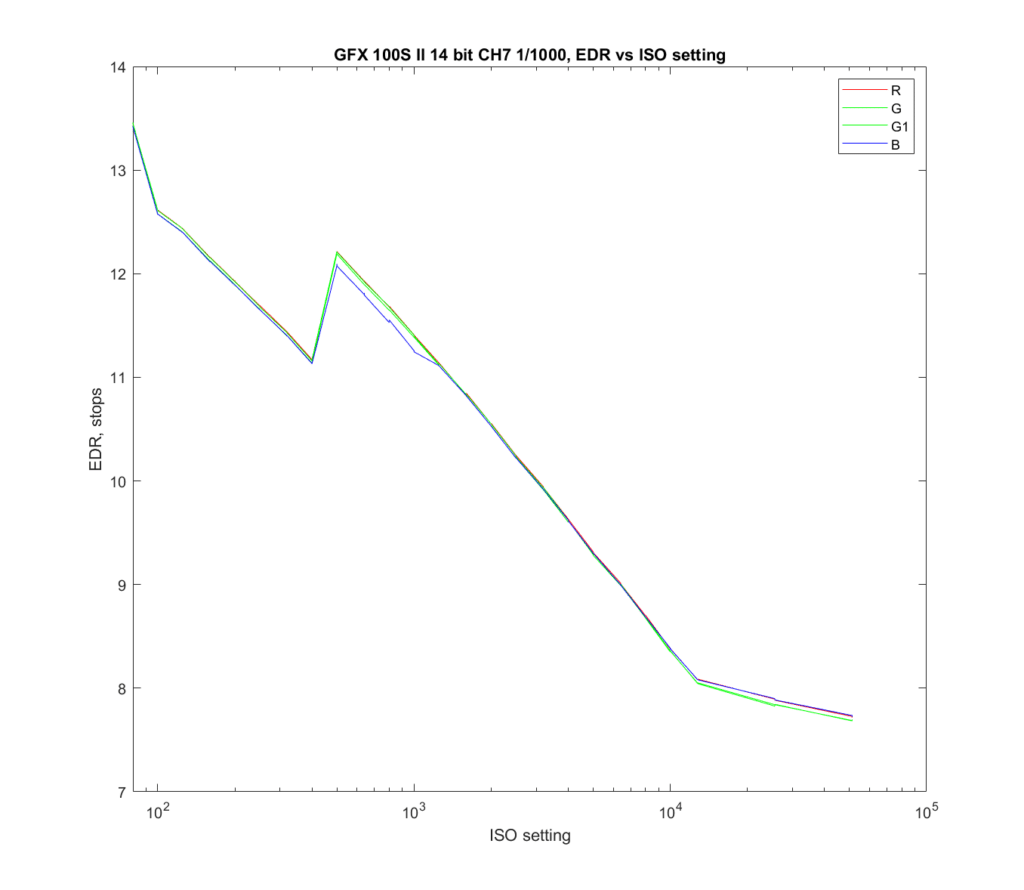
Julian says
Hi love all the work you do to report on the specifics of these rarer cameras. Perhaps this is a silly question but do you know the benefit of shooting in 16-bit mode on this particular camera if the EDR difference is nil? Is it just more complex / accurate color in the details? Is there a way to test for that? Cheers
JimK says
I see little reason to use 16-bit precision on this camera. The black point at very short exposure appears to be somewhat more accurate, but that’s about it.
Julian says
Thanks for the explanation! Would it be possible to include a graph with the 16-bit and 14-bit single shot mode overlaid so we can more easily spot the minor differences? Please ignore if that’s already been done on a previous article.
JimK says
I added that graph to the post.
Jared Bush says
This is probably a question that has been asked before, but why the 1 stop drop in dynamic range between ISO 400 and 500?
Why is it not “linear?”
Can you point to a post discussing this?
JimK says
https://www.photonstophotos.net/Aptina/DR-Pix_WhitePaper.pdf
Jared Bush says
Increase, not decrease.
Weston Harby says
Seems that there isn’t much difference between 14 vs 16 bit precision for normal shooting. Does the story change when using pixel shift since increases the DR?
JimK says
No, although 16-bit precision is useful when averaging a bunch of 14-bit images.
Andrey says
Thank you for the test, very interesting.
Compared to gfx 100s iso 100, iso 80 on gfx 100s II and 100II is higher, slightly above 14 stops. If I understand correctly being that the sensor is the same it’s just some kind of postprocessing or is there a real benefit with DR on new bodies, or I’m safe to buy the older one.
Thank you!